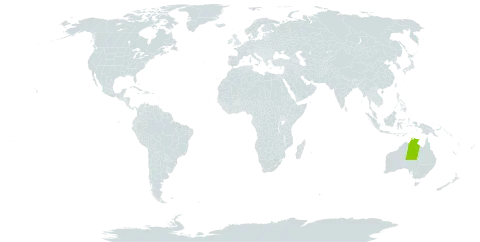Shrub to 1.4 m high, viscid especially on young shoots; young branchlets glabrous. Leaves alternate, appressed, oblong, 1.5–3 mm long, 0.8–1.3 mm wide; base obtuse; margin strongly recurved to midrib concealing abaxial surface; apex straight, rounded, apiculate; adaxial surface glabrous, ±smooth. Inflorescences on peduncles to 0.5 mm long. Male flowers: androecium c. 2 mm long; stamens c. 26. Female flowers sessile; calyx lobes ovate or elliptic-ovate, 2.1–2.3 mm long, glabrous abaxially, with margins entire or minutely fimbriate; ovary glabrous. Fruit ellipsoid, 3.9–4.5 mm long, glabrous, 1-seeded; persistent calyx lobes half the fruit length or shorter.
Grows on sand dunes, sometimes associated with salt lakes, in open mallee or low open woodland in well-drained aeolian sand or pebbly brown sandy clay.
